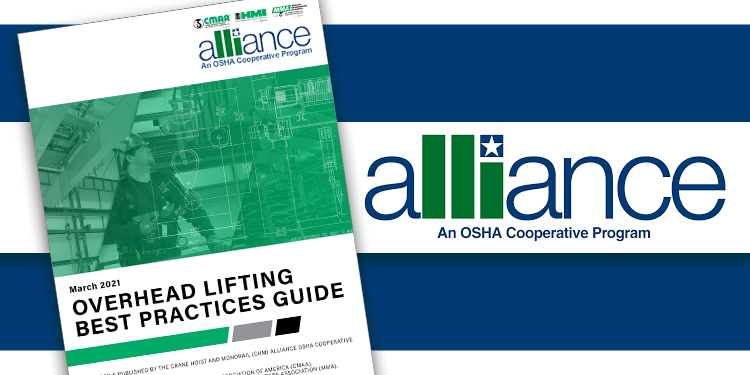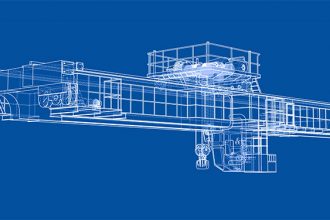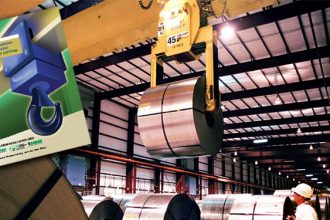New Overhead Lifting Best Practices Guide To Be Released

Between them, the members of MHI’s Overhead Alliance — which includes the Crane Manufacturers Association of America (CMAA), the Hoist Manufacturers Institute (HMI), and the Monorail Manufacturers Association (MMA) — have answered thousands of questions and published approximately 100 documents regarding the safe design, operation, maintenance, and inspection of overhead lifting equipment. Therefore, when the group’s Service and Safety Committee began working on their latest publication, the Overhead Lifting Best Practices Guide, the consensus was to include the safety topics industry members are most often asked about by equipment owners and users. The finished publication will be released in 2022 and offered as a free download.
The document was developed through the three industry groups’ collaboration with the Occupational Safety and Health Administration’s (OSHA), the Crane, Hoist and Monorail (CHM) Alliance. Through this partnership, the organizations provide information, guidance and access to training resources that help protect the health and safety of worker using hoists, cranes and monorails.
Each of the safety topics covered includes the most frequently asked question(s) about training, safety devices, and operational requirements, plus definitions. Further, any requirements pertaining to that specific topic are detailed, including those from CMAA, HMI, MMA and OSHA, as well as from the American Society of Mechanical Engineers (ASME), the American National Standards Institute (ANSI), and the National Electrical Code (NEC). Each topic also includes a list of several best practices for how to interpret those requirements and implement or follow their directions in order to create the safest overhead lifting environment possible.
The topics featured in the Overhead Lifting Best Practices Guide give owners and operators of overhead lifting equipment a comprehensive, single source reference about the tools and techniques that contribute to a safer operation. In addition to enhancing operational safety by following the guidelines and standards included in the publication, overall productivity will likely increase. The 18 topics include:
- Overhead crane and hoist operator qualifications
- Integration of fall protection into crane structures
- Rated load capacity markings on hoists and cranes
- Safety signs, decals, labels, placards, cord tags or other markings to indicate hazards
- Audible and visible warning alarms
- Load test requirements and inspections
- Bare, uninsulated conductor bar systems that provide power to a crane
- Guarding for conductor bar systems that prevents inadvertent contact
- Limit switches for operation and over-travel
- Emergency stop switches and safety disconnects
- Emergency stops for powered, below-the-hook devices
- Runway disconnect switches
- Rail sweeps on bridge and trolley end trucks
- Bumpers for trolleys and bridges to minimize impacts
- Brakes for trolleys and bridges for slowing, stopping, holding and controlling motion
- Guarding for crane and hoist couplings and line shafts
- End stops to limit trolley or crane bridge travel
- Hoist load chain containers for slack chain
What other benefits can your operation gain by deploying overhead handling technologies? MHI’s Overhead Alliance has produced a free publication, “Expand Your Possibilities. Discover the Potential. Choose Overhead Lifting.” It details 13 different ways overhead lifting equipment benefits manufacturing and distribution operations.



